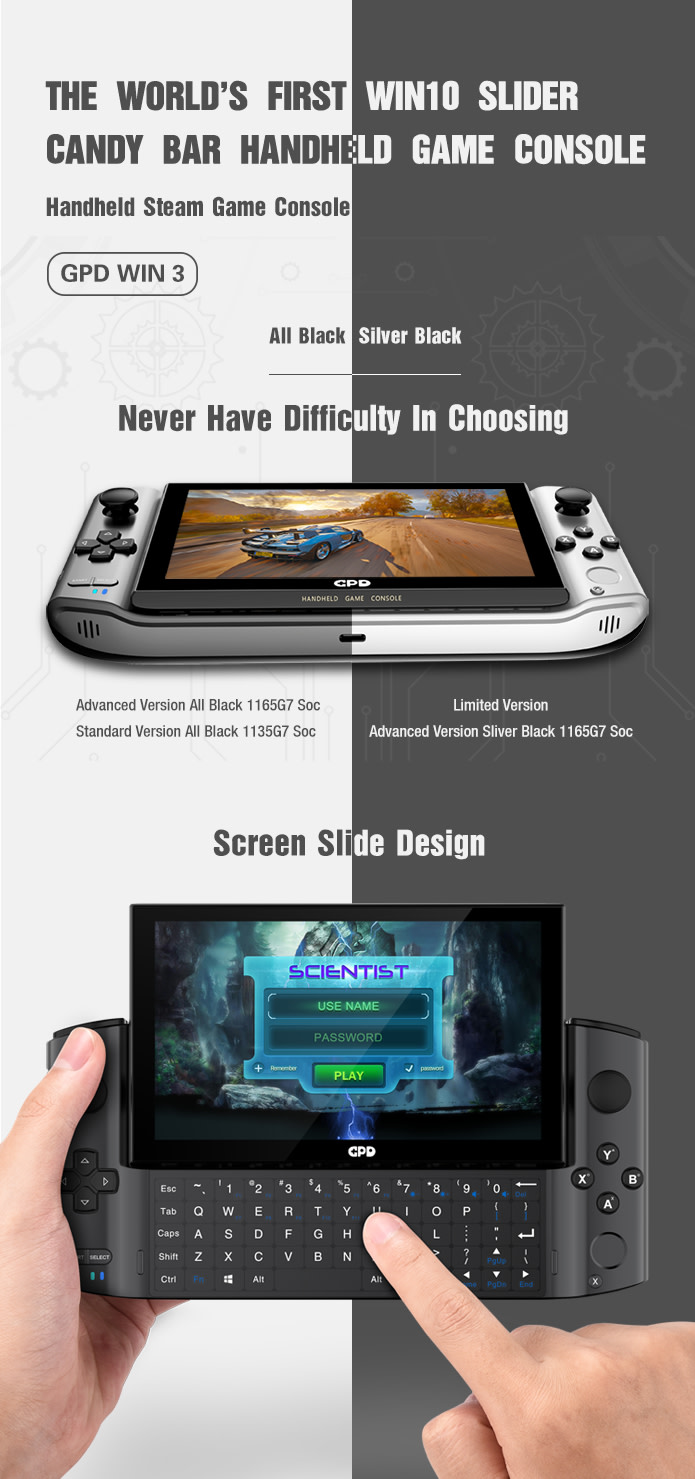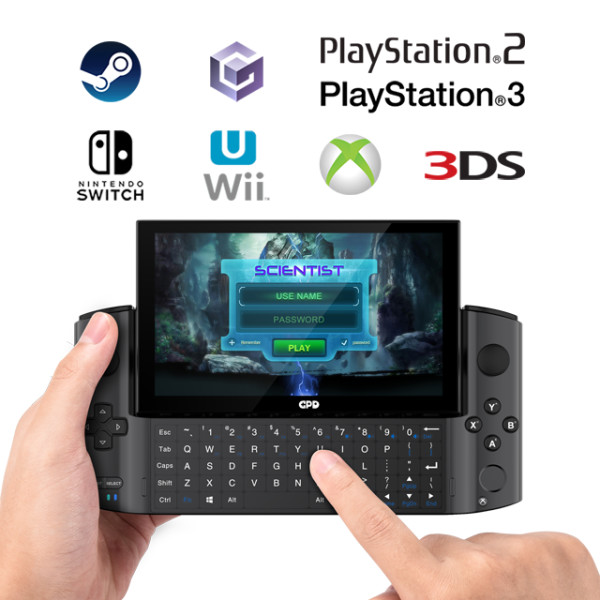
1165G7/1135G7 processor, 16GB LPDDR4x 4266, 1TB NVMe SSD, 60 FPS for the latest AAA games

From the first generation of the WIN series, the handheld game consoles created by GPD were all clamshell designs. After all, the screen input of the Windows system is not user friendly. However, many users did not like the combination of keyboard + clamshell, and strongly urged us to launch a bar type handheld game console. For our users, after exploration, we referred to the design of the sliding cover of the Sony UX series, incorporated the new backlit touch keyboard, and finally designed WIN 3. It renovates the cliche clamshell design and is an authentic handheld game console. The details of WIN 3 are the best in history!

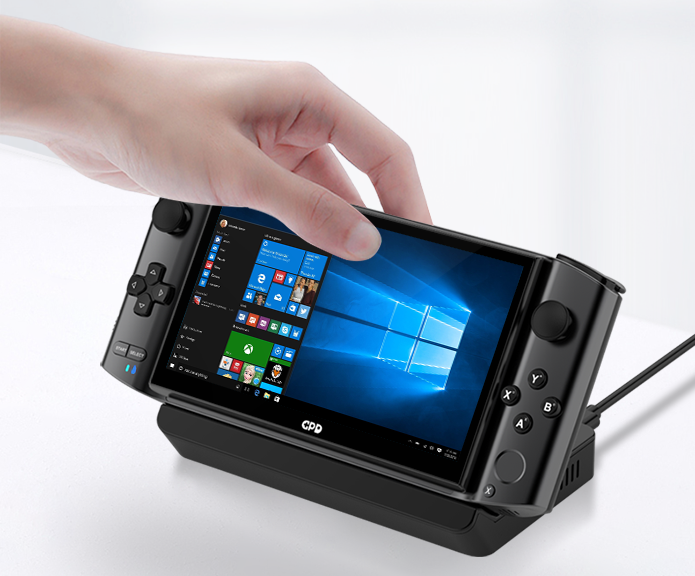
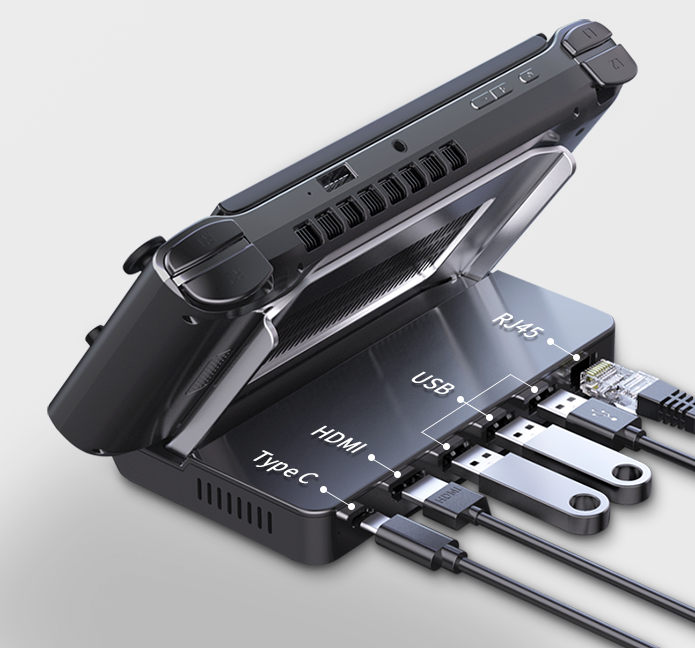
Interface description:
- 3 USB 3.2 Gen2 Type-A ports, all at 10Gbps;
- 1 USB 3.2 Gen2 Type-C interface, 10Gbps;
- 1 HDMI 2.0b interface, bandwidth up to 18Gbps, supports up to 32 channels, 48bit maximum color depth, and supports HDR;
- 1 RJ45 network port, 10/100/1000Mbps self-adaptive network card.

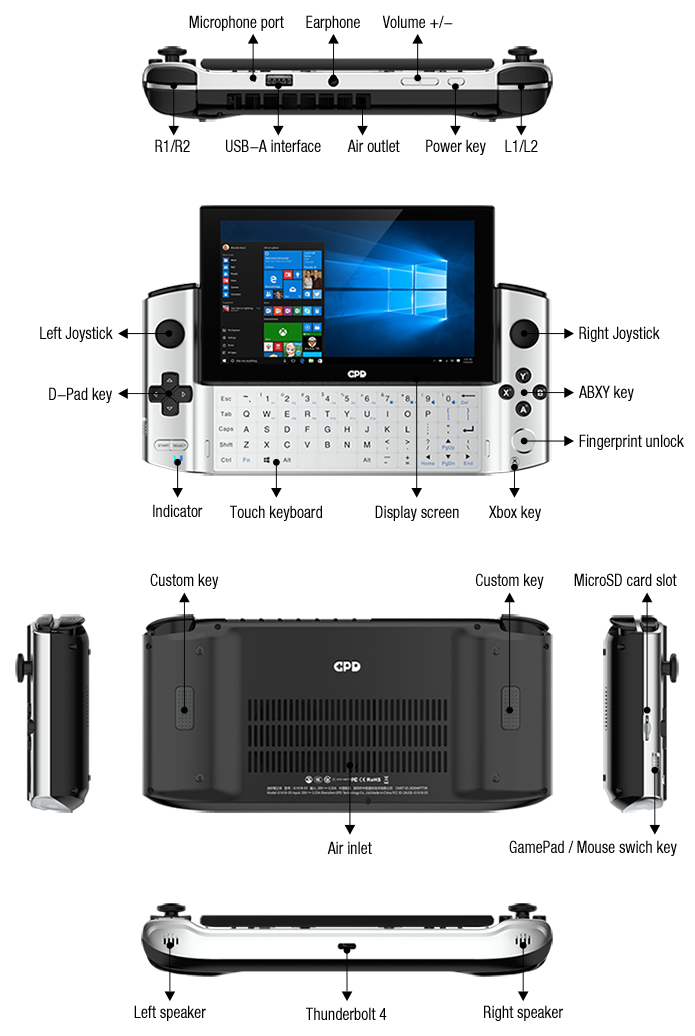

- The world’s first Win10 slider bar handheld game console, and the best-detailed handheld game console in GPD’s history!
- The latest AAA-level game masterpiece, most of which can run at 60 FPS with special effects;
- Screen slide design + hidden white backlit touch keyboard, with vibration prompt when touching;
- PC-grade turbofan + dual heat pipes for heat dissipation, large displacement side-blowing design, 8-hole high-speed heat dissipation channel;
- Dual vibration motors on the handle, comparable to the ALPS dual 3D joysticks of Japan’s top joysticks Seimitsu and Sanwa, native support for pressing down for L3/R3 function;
- Trigger button L2 / R2 linear simulation; the car accelerates gradually, and the shooting instantaneously kills, just like the real accelerator and gun trigger;
- AAC top three-dimensional super linear loudspeaker from Germany, double amplitude enhancement, super lively sound!
- The shell is made of aviation-grade ABS synthetic resin, with Rockwell hardness of 109R, matte body, great texture;
- 5.5-inch sunlight screen, 268 PPI, H-IPS technology, the 5th generation Corning Gorilla Glass, NTSC: 84% (typ), DC dimming;
- Intel 11th generation Tiger Lake-U series processors, single-core performance surpasses desktop flagship i9-10900K;
- Intel 12th generation Iris Xe Graphics core graphics card, comprehensive performance surpasses MX350, and some floating-point computing performance exceeds MX450;
- 16GB LPDDR4x 4266 memory; only with Intel’s 11th generation Tiger Lake-U processor can the memory bandwidth of 86GB/s play its role;
- The new Thunderbolt 4 unified interface, with doubled bandwidth, natively supports USB 4; when an external eGPU is installed, the independent display performance is fully utilized, and the frame rate is increased by 300%;
- The fourth-generation PCIe bus technology, 1TB M.2 NVMe 2280 SSD’s read and write speed can be doubled, surpassing Thunderbolt 4;
- Support A2-level microSDXC card, read speed up to 160MB/s;
- Support the latest Wi-Fi 6, 300MB/s high-speed Internet, which is 2.77 times faster than Wi-Fi 5;
- Support Bluetooth 5.0, 3MB/s transmission speed, precise positioning within 1 meter, long-distance communication of 300 meters, up to 7 Bluetooth devices can be connected;
- Docking station + bracket + charger, smart dock, handheld game console changes to host in seconds;
- 65W PD 2.0 protocol fast charge, a full charge only takes 1.5 hours.

Compared with WIN Max, WIN 3 gives full play to the performance of the Intel® Iris® Xe Graphics core graphics card, and FPS has increased significantly. The following table is the measured data of the game’s default special effects at a resolution of 1280×720.

* Testing environment: i7-1165G7 & i5-1135G7 / 16GB LPDDR4x-4266 / 500GB NVMe SSD / 1280×720 / Windows 10 Home 64bit

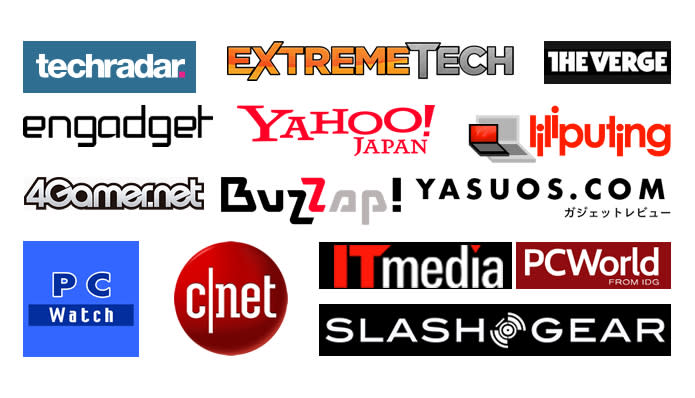


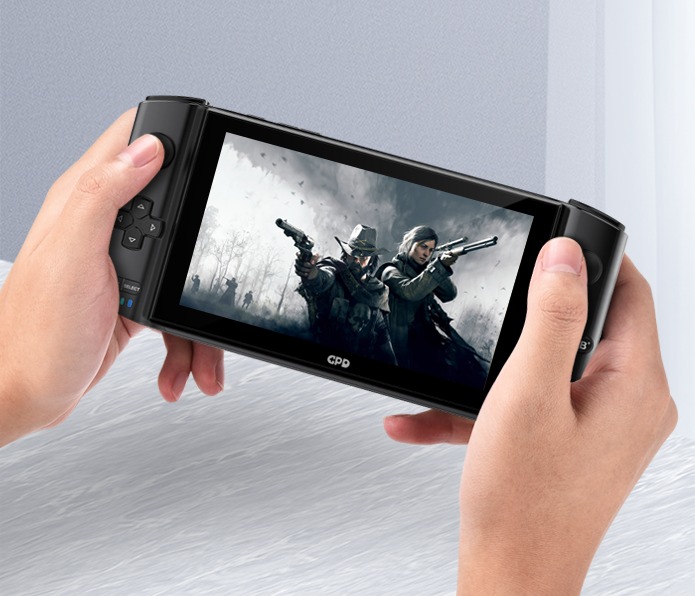
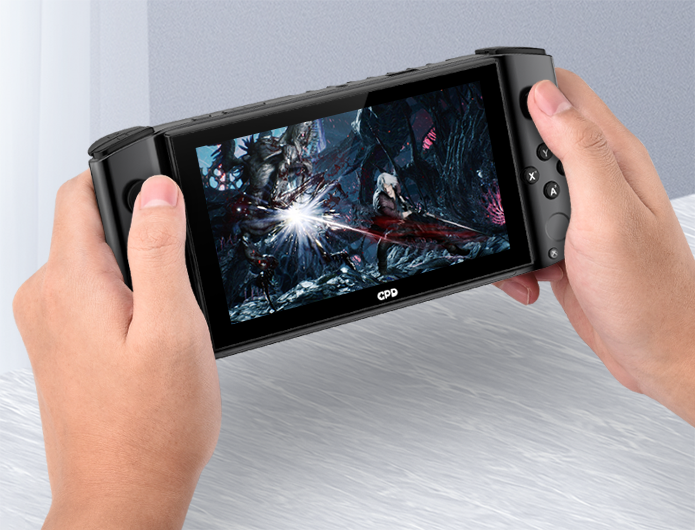
Hold with both hands, play games anytime, anywhere.
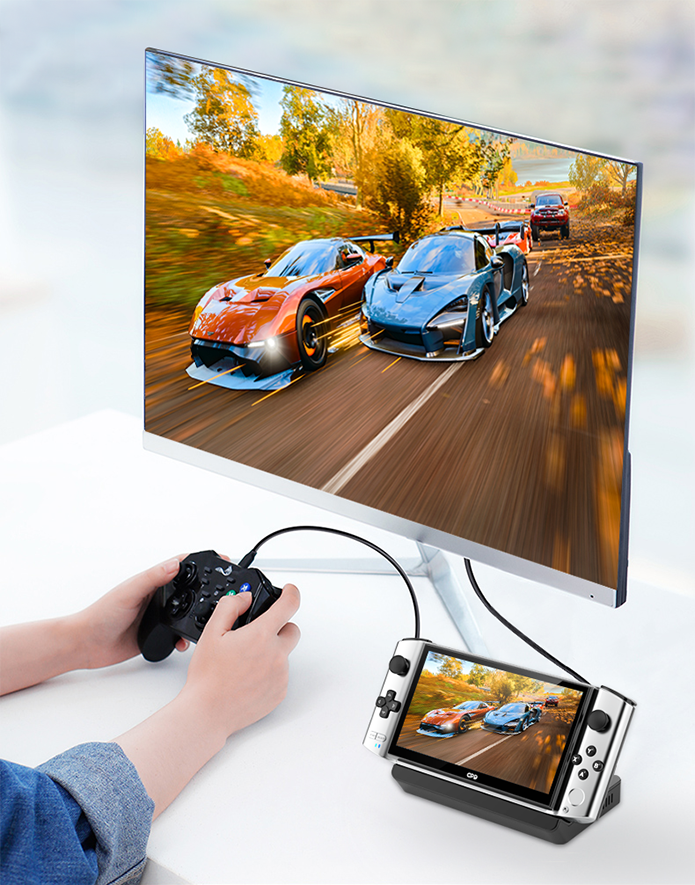
The base + machine is placed flat on the desktop as a host, with an external monitor and handle for playing games.
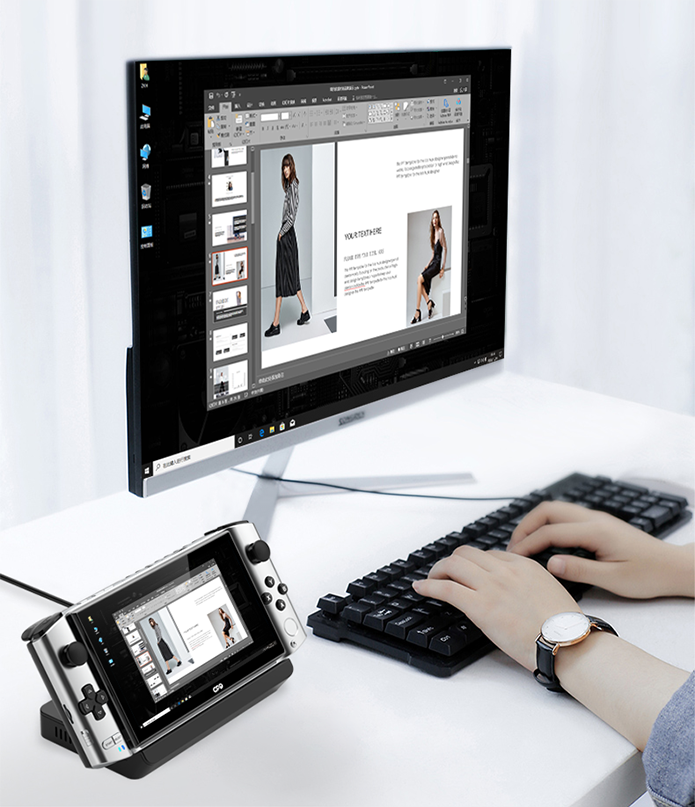
Base + machine flat on the desktop, operate with the external mouse, keyboard, and monitor.

Users who have participated in crowdfunding are no strangers to WIN Max. The following table is a comparison between WIN 3 and WIN Max:
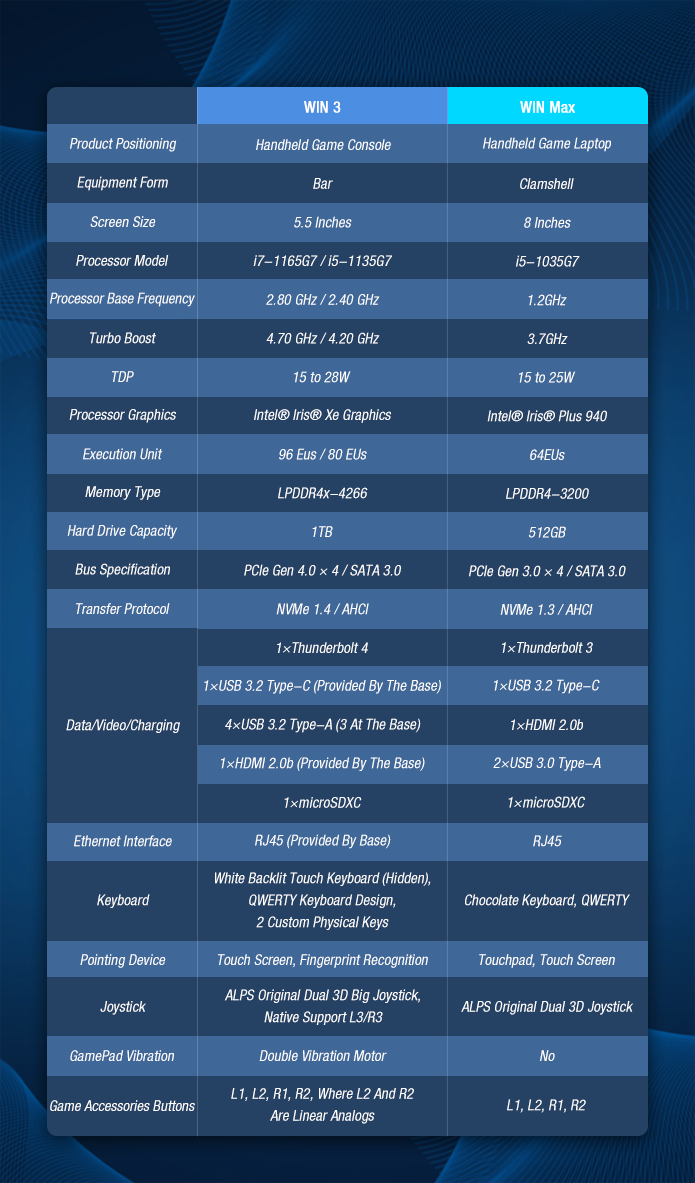

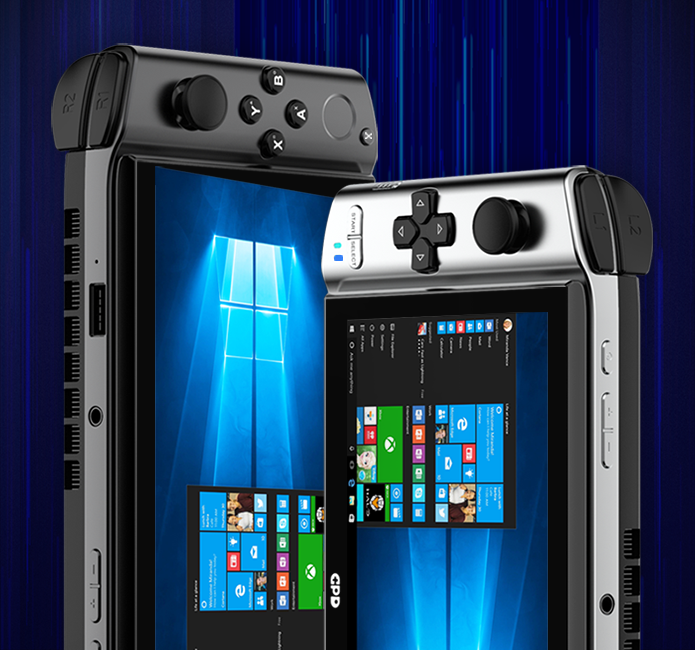
Pure handheld game console players have very high requirements for screen size. For example, the screen of 3DS XL is only 4.88 inches, the screen of PSV 2000 is 5 inches, the screen of WIN 1 is 5.5 inches, the screen of WIN 2 is 6 inches, the screen of Switch is 6.2 inches, and Switch Lite has returned to 5.5 inches. Generally speaking, 5.5 inches is the size accepted by most handheld game console players.
WIN 3 uses a 5.5-inch sunny screen, NTSC: 84% (typ), resolution 1280×720, 268PPI, and adopts Corning’s fifth-generation Gorilla Glass, DC dimming, so there is no need to worry about the graininess of the screen. If you have WIN 1, you should have a better understanding of the experience under this screen size than novice players. In fact, the 5.5-inch screen size of WIN 1 has the best reputation at present!
The main body of WIN 3 still adopts LG-DOW 121H aviation-grade ABS synthetic resin, with Rockwell hardness of 109R and bending strength of 26,000kg/cm2. The A side and the lateral sides are silver-gray matte spray, with no glare and with great texture.

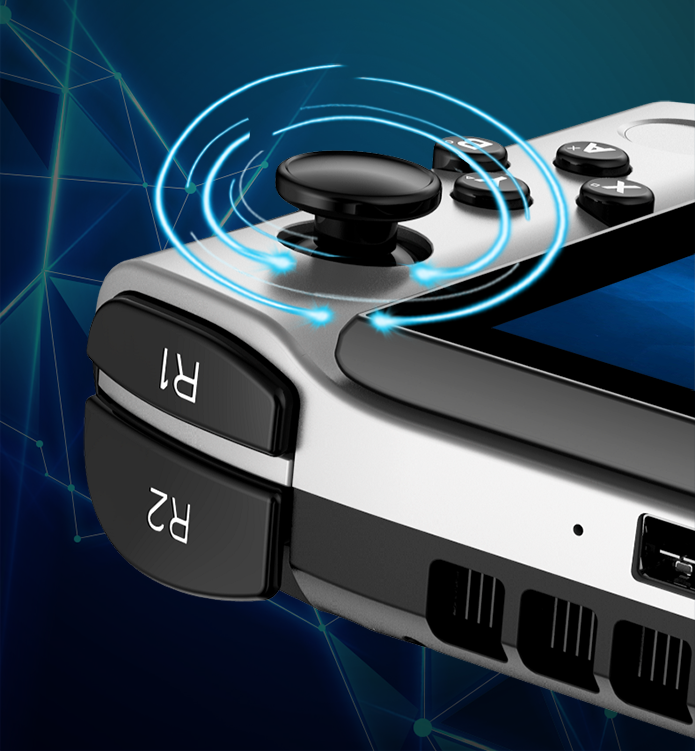
Of a flip handheld game console, the rocker can only adopt a sinking design, with short stroke, small swing distance, high resistance, and the experience is far inferior to that of independent handles. WIN 3’s protruding ALPS original dual 3D big rocker has large stroke, large swing distance, low resistance, which sacrifices a little reaction speed, but improves accuracy. As the player is in a fighting game, its control comfort is comparable to those of Japan’s top joysticks Seimitsu and Sanwa, and it natively supports down-pressing to achieve L3/R3 functions.
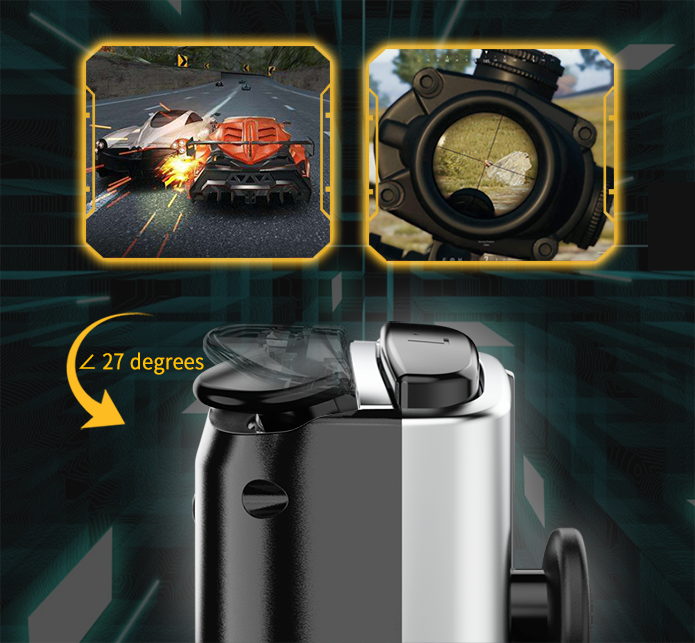
The most popular game among players is nothing more than “cars, guns, and balls”. The early handheld game consoles of GPD, when playing racing games, were very blunt when turning, accelerating, or decelerating. The reason is that the trigger button is a digital signal and only has two states 0 and 1. L2 and R2 of WIN 3 are changed to linear simulation, with an inclination angle of 27 degrees, which can produce 256 (0 to 255) states and convert the obtained acceleration value into a digital command. If you are an advanced player and experience the racing game with WIN 3, its smoothness will be qualitatively changed. The racing will gradually accelerate, and the shooting will be full of seconds, just like doing with a real throttle and gun trigger!
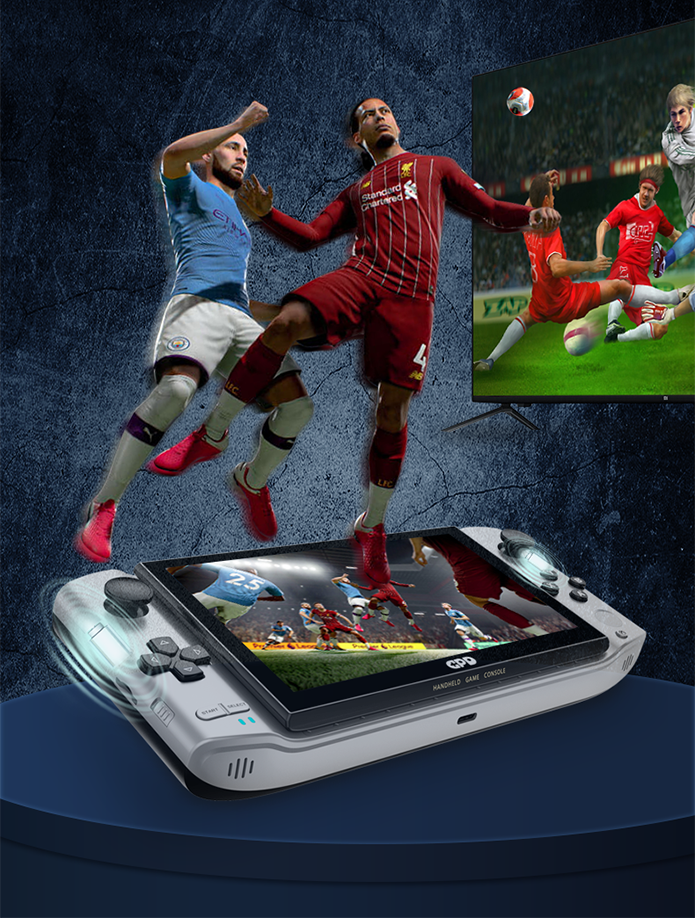
WIN 3 is also equipped with dual vibration motors. Its extreme vibration effect and fine vibration will make you feel better immersed in the game. Starting a car engine, shooting a laser gun, controlling a helicopter, etc., all have an unparalleled sense of reality. When shooting, you can feel the recoil of the gun pushing you back, and starting the engine can make your body tremble, like an overcharge, which brings a tingling sensation, just like sitting in a rumbling car.

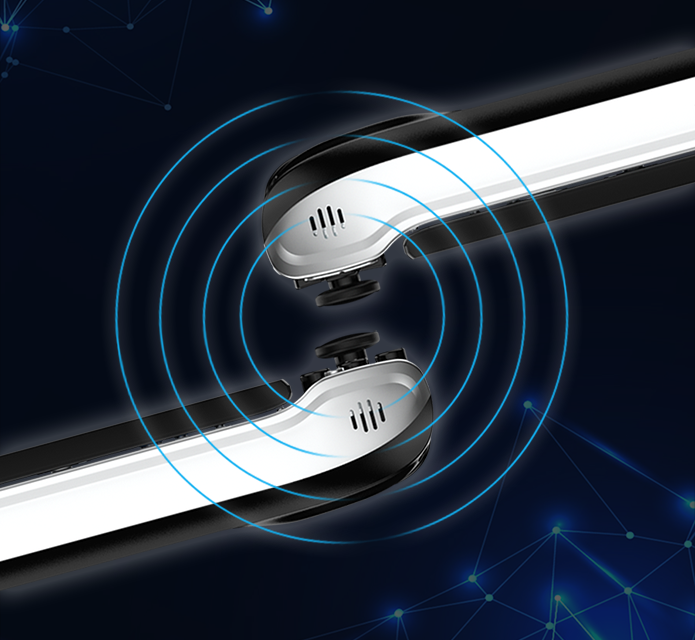
The previous WIN series handheld game consoles adopt ordinary symmetrical dual speakers, and the sound quality has always been criticized by users. WIN 3 adopts the AAC top stereo super linear speaker from Germany. The sound cavity is built with bass materials and adopts a 0.9cc large sound cavity design. The double coil drives the diaphragm and balances the force of the diaphragm and doubles the amplitude. Therefore, the sound is super lively and loud!

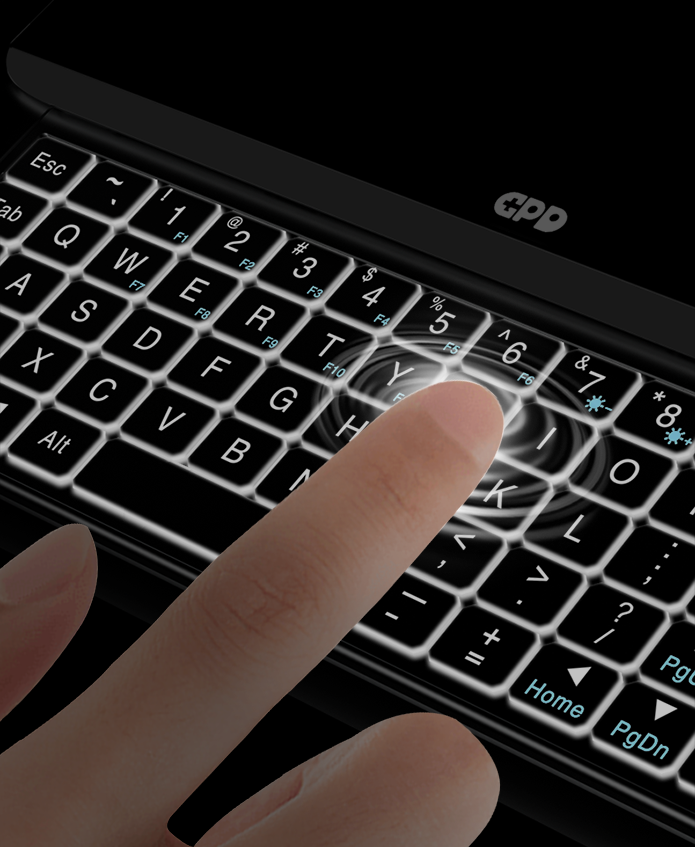
The touch keyboard of WIN 3 is hidden at the bottom of the screen and adopts the QWERTY full keyboard layout, and add the function of vibration motors. When the screen is slid open, the white backlight is on, and there is a vibration prompt when the finger touches.
Why use a touch keyboard? The opinion of most players is that WIN handheld game console keyboards are rarely seen because few people use it to play online games, and they are usually only for game account and password inputs. With a candy bar handheld game console, if a physical keyboard is added, the body will be too thick and the internal structure design will be too complicated. WIN 3 adopts a thinner touch keyboard, which does not take up internal structural space and can free up more space for heat dissipation and batteries.
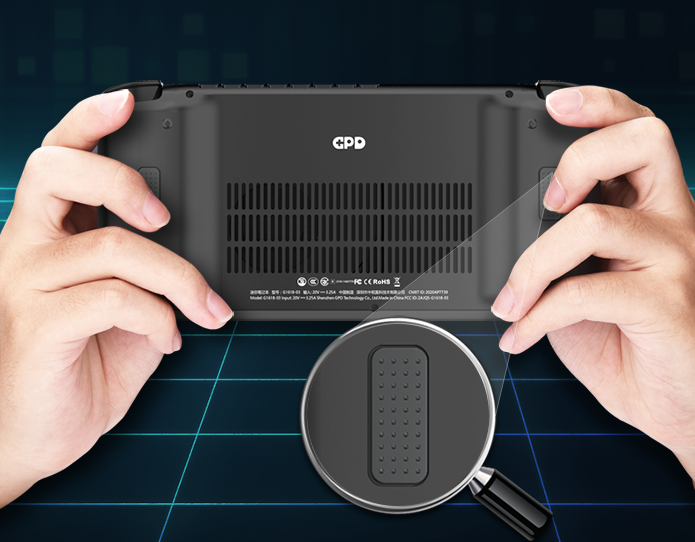
When playing games, the cover is usually not slid open because the keyboard is not used. However, sometimes, when you need to press the ESC key to return to the game settings interface, it is troublesome to slide each time. To this end, we added 2 customizable physical keys on the back of WIN 3, so that players only need to use the “key position modification software” developed by GPD and built into the system to define a key on the keyboard.
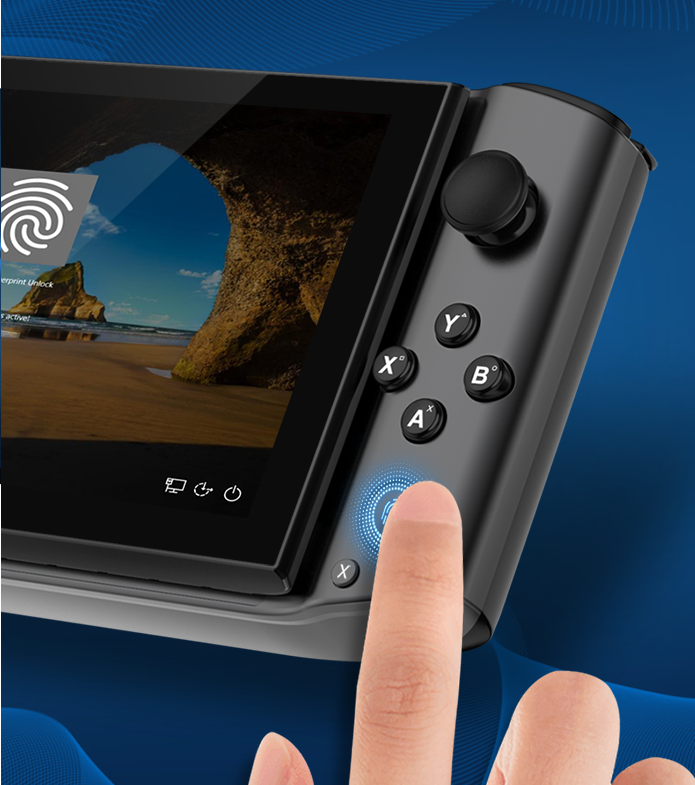

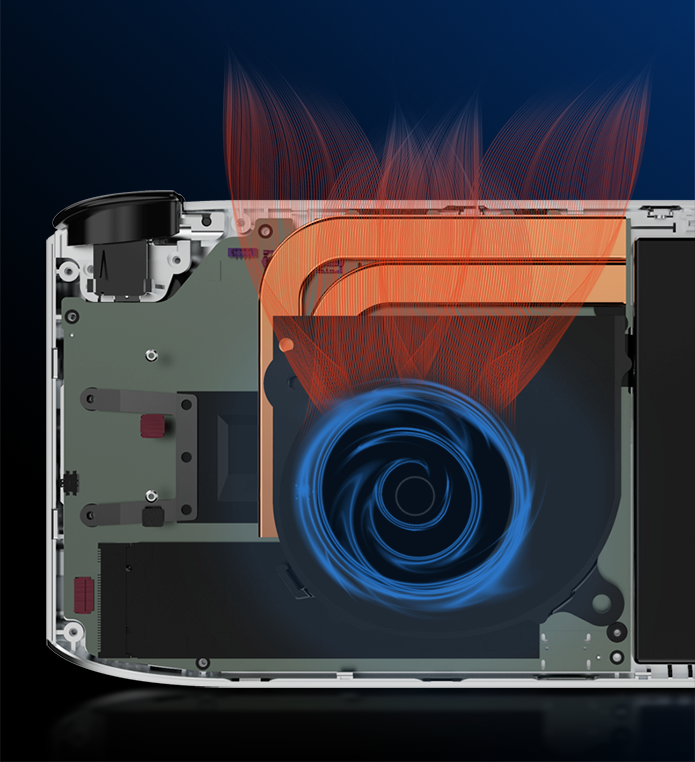
To improve the heat dissipation performance, WIN 3 adopts a super turbofan for PC + dual heat pipe heat dissipation solution, with PWM control. When the internal temperature is lower than 40℃, the fan only turns on at 20%. When the internal temperature is higher than 40℃, the fan accelerates with 2% PWM increments each time, up to 100%. The air outlets almost occupy the entire top, and the 8-hole high-speed channel allows the device to quickly discharge heat. TDP is designed with three levels, 15-20W, 20-25W, 25-28W. Players can enter BIOS to set the TDP.
The D surface is black matt spray with curved edges, the middle is an 80×30mm hollow air inlet, and the handle part is a 5mm protruding design, which helps avoid blocking the air duct when it is laid flat.

Tiger Lake-U in WIN 3 has a performance increase of 20% compared to Ice Lake-U of the previous generation, has a core graphics card of doubled performance, and has 5 times the AI computing power of the previous generation. The following table is the single-core/multi-core performance comparison of Geekbench 5:
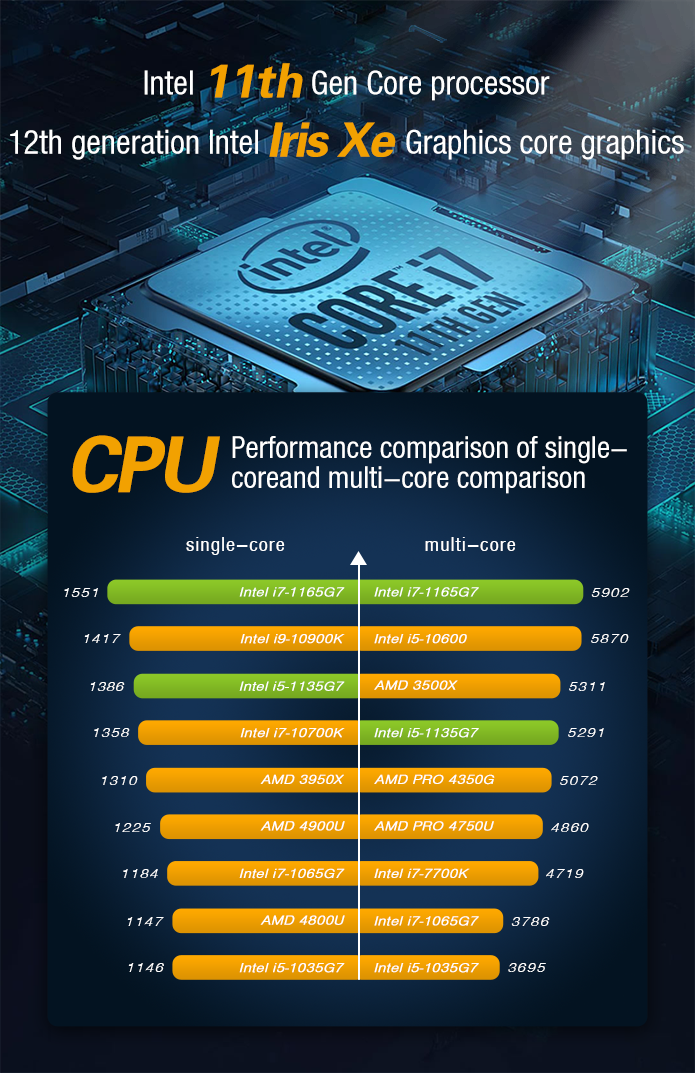
In terms of single-core performance comparison, i7-1165G7 surpasses desktop flagship processor i9-10900K; in terms of multi-core performance comparison, i7-1165G7 still beats desktop processor i5-10600.

WIN 3 integrates the 12th generation Intel Iris Xe Graphics core graphics card, with 96 computing units, 8 cores per unit, and a total of 768 cores; its base frequency is 400MHz, the maximum dynamic frequency is increased to 1300MHz, and it integrates 1MB L2 cache. The overall performance of the 96EU 1165G7 surpasses the NVIDIA GeForce MX350, and the 80EU 1135G7 also surpasses the NVIDIA GeForce MX350 at 28W.
The following table shows the performance of several mainstream mobile graphics cards under 3DMark 11 at a resolution of 1280×720:
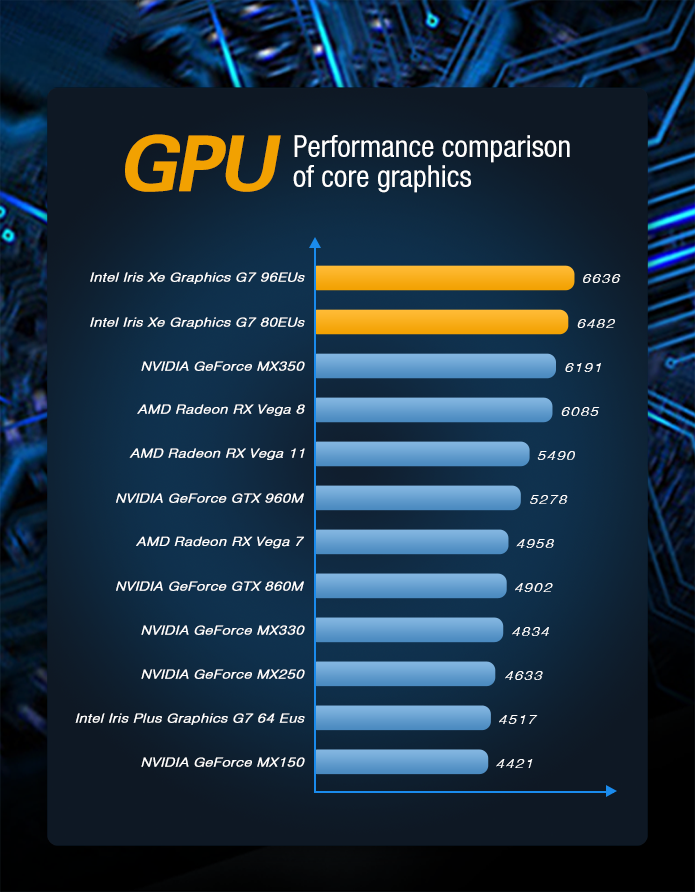
Game players all know that the MX100-MX400 series launched by NVIDIA is unique, carrying the heavy task of enhancing the power of the game for light and thin devices. One of the criteria for testing the performance of the core graphics card is the floating-point computing capability, which includes half-precision (FP16), single-precision (FP32), and double-precision (FP64). Compared with Nvidia, how does the lightweight standalone Intel Iris Xe Graphics G7 96EU perform? The following table is a comparison of the four most powerful mobile graphics cards:
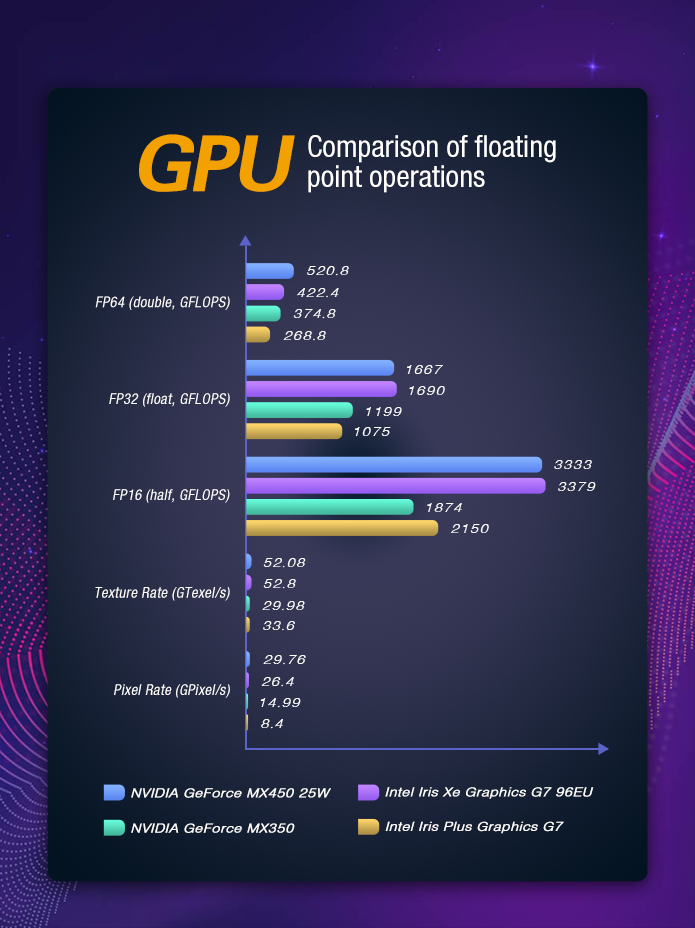
Intel Iris Xe Graphics G7 96EU surpasses NVIDIA GeForce MX450 (25W) in half-precision and single-precision floating-point operations and texture rate.

The Intel 11th-generation Tiger Lake-U processor increases the memory bandwidth to 86GB/s and supports the highest LPDDR4x 4267 memory to help make use of the performance of the core graphics.
After testing, we found that the memory write speed of WIN 3 (Intel Core i7-1165G7) is twice that of HP EliteBook 845 G7 (AMD Ryzen 7 4800U), although both products have built-in 16GB dual-channel LPDDR4x 4266 memory.
We found that HP EliteBook 845 G7 will automatically reduce the frequency to LPDDR4 2666 MHz when the system is running. Looking at the Geekbench database, the comparison between i7-1165G7 and Ryzen 7 4700U shows that the memory bandwidth of the Intel processor is nearly 50% higher. Almost all ultrabooks of AMD schemes are down-clocked to run at LPDDR4-2133 MHz to reduce latency.
Obviously, AMD has made a compromise for the 15W APU, which is to reduce the frequency of the memory under certain circumstances. After all, the CPU, GPU, DDR, and SSD are all rushing for power, and the lack of power can only reduce the frequency. Using Prime95 to test memory stability, it was found that HP EliteBook 845 G7 will crash instantly.
Therefore, we can draw a conclusion that AMD Ryzen 4000 series, with LPDDR4x 4266 memory, can only run at a reduced frequency. At present, LPDDR4x 4266 can only rely on the Intel 11th generation Tiger Lake-U processor to play the 86GB/s memory bandwidth!
The following table shows the memory benchmark tests done on LPDDR4 3200, LPDDR4x 3733, LPDDR4x 4266:
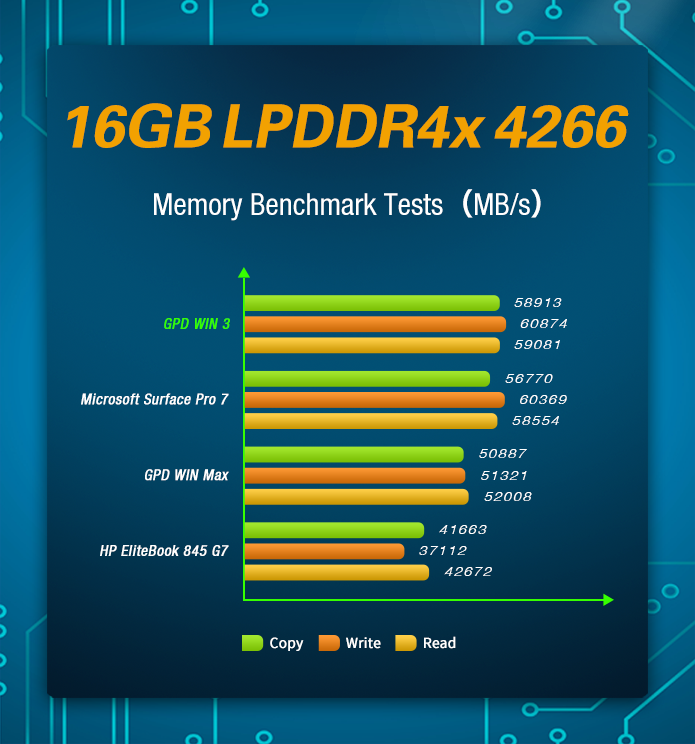
* Of the scores on read, write and copy, the corresponding products are all dual-channel devices.

Of WIN 3’s built-in Intel 11th generation Tiger Lake-U processor, the biggest highlight is the integration of PCIe 4.0 interface specifications, and the bandwidth is doubled!
At present, the sequential read/write of SSD with mainstream M.2 NVMe protocol interface is about 2000 to 3000MB/s. However, this is not the flash memory speed limit. It is limited by the interface bandwidth of PCIe 3.0×4, and the theoretical throughput limit is 3.938GB/s. The theoretical throughput limit of PCIe 4.0 reaches 7.877GB/s. Therefore, when you use PCIe 4.0 SSD on WIIN 3, its speed will double.
Tiger Lake-U series is currently the only embedded processor that can give full play to the performance of PCIe 4 SSD. Because the competing AMD Ryzen 4000 series still only supports PCIe 3.0, Tiger Lake-Y only has a bus speed of 2GT/s OPI. When the CPU exchanges data, it is only equivalent to PCIe 3.0.
The image below is the actual read/write test of WIN 3 built-in Samsung 980 Pro SSD (support PCIe 4.0), and its comparison with several other products:
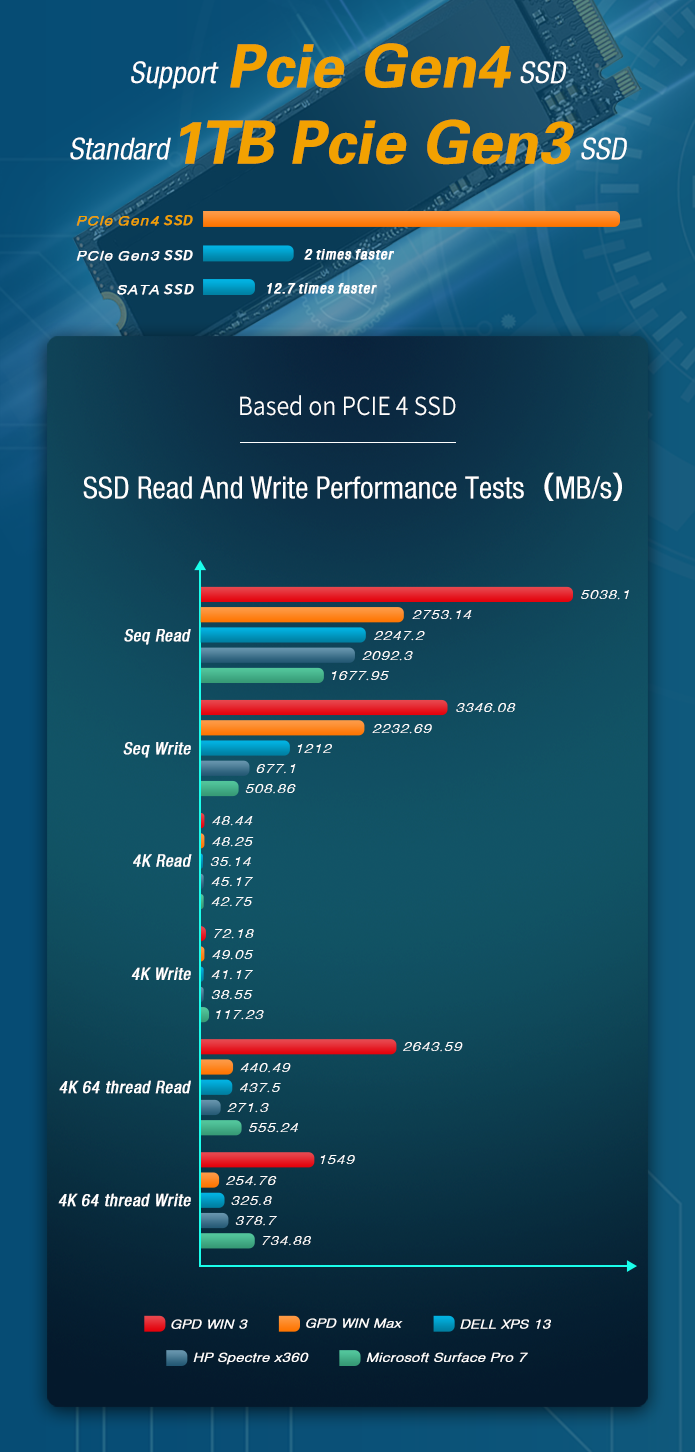
* Test software: AS SSD Benchmark;
* Test environment: 1135G7, LPDDR4x 4266, Samsung 980 PRO 500GB;
* Different versions of AS SSD Benchmark test results are slightly different, and the heat dissipation will severely affect the read/write speed.
* The chart shows the read and write speed of PCIe 4 SSD. The standard configuration of the shipped machine is PCIe 3 SSD. If you need to reach the speed of the SSD in the chart, please purchase PCIe 4 SSD and replace it by yourself.
It can be seen that the sequential read of Samsung 980 Pro 500GB exceeds 5000MB/s, the sequential write speed exceeds 3300MB/s, and the read speed even exceeds Thunderbolt 4!
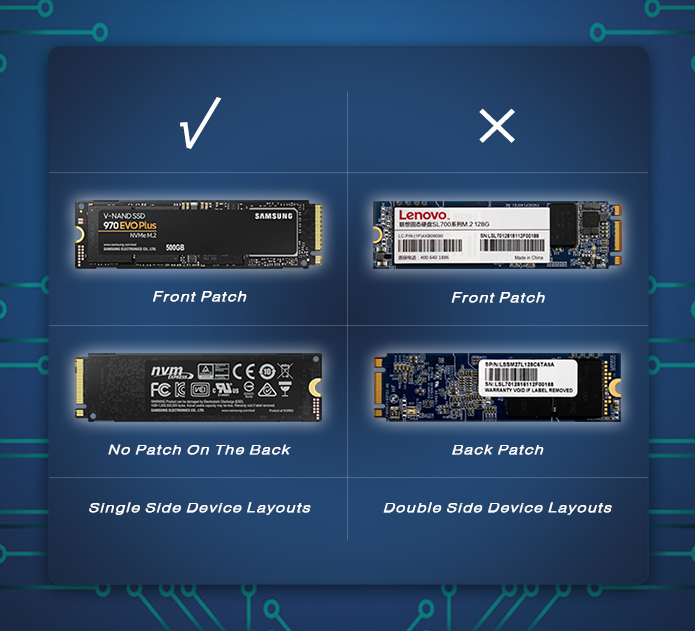
WIN 3 adopts M.2 NVMe / AHCI dual protocol interface, so no matter what kind of SSD you want to replace it with, it will work. However, due to space constraints, WIN 3 only supports M.2 2280 single-sided device layout, such as Samsung 980 PRO, while Lenovo NGFF SL700 cannot support it. Please distinguish when replacing SSD.

Although SSD can expand capacity indefinitely, WIN 3 does not give up the microSDXC card slot. WIN 3 supports A2 standard Micro SDXC card, A2 card greatly improves the video speed level, the lowest random read and write I/O performance can reach 4000/2000 IOPS, and the theoretical read and write speeds have reached 170MB/s and 90MB/s, which are nearly twice the speed of the A1 card. Meanwhile, it supports a maximum capacity of 2TB. The figure below is a comparison of the read and write speed data of two SanDisk microSDXC cards:
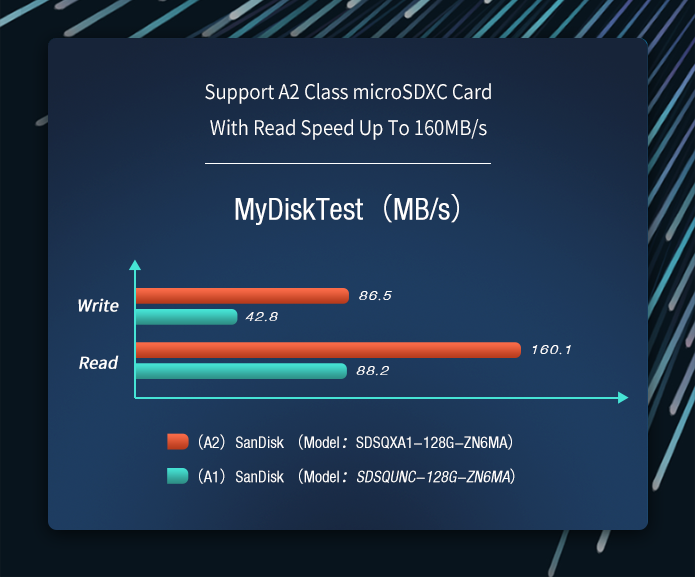
* Note:
Sandisk (model: SDSQUNC-128G-ZN6MA) is the measured data under WIN 2 (support A1 card), and the standards are: C10, U1, A1.
SanDisk (model: SDSQXA1-128G-ZN6MA) is the measured data under WIN 3 (support A2 card), and the standards are: C10, U3, V30, A2.

Another highlight of WIN 3 is the integration of the latest Thunderbolt 4 interface, which natively supports USB 4, USB 3.2 Gen 2×2 (20Gb/s), HDMI, DisplayPort, RJ-45 network port, audio port, charging and other interface protocols, and is backward compatible with USB interface specifications 3.2/3.1/3.0/2.0/1.1. Thunderbolt 4 can be considered as having completed the unification of peripheral interfaces.
The transfer rate of Ice Lake-U of the previous generation, Thunderbolt 3 is 40Gbps, which includes one 8Gbps DisplayPort channel and four 8Gbps PCIe 3.0 channels. However, Thunderbolt 3 limits the maximum transfer rate supported by each connected device to 16Gbps (2GB/s). When you connect an external graphics dock, you can only use PCIe 3.0×2, and its bus DMI 3.0×4 can only provide 3.94GB/s bandwidth.
The transfer rate of Thunderbolt 4 is still 40Gbps, but the PCIe 4.0 bandwidth is doubled, and the maximum transfer rate supported by each connected device is increased to 32Gbps (4GB/s). The bus DMI 3.0×4 doubles to DMI 3.0×8, which can provide a total bandwidth of about 7.86 GB/s. In this way, when playing games with Thunderbolt 4 external eGFX (graphics card docking station), the performance of the external graphics card will be fully utilized because the bus bandwidth is doubled.
The Tiger Lake-Y series processors, although also integrated with Thunderbolt 4, can only provide 3.93GB/s bandwidth because the bus speed is only 2GT/s.
Through the external graphics dock, whether using the main screen or an external monitor, the game frame rate is increased by 300%.
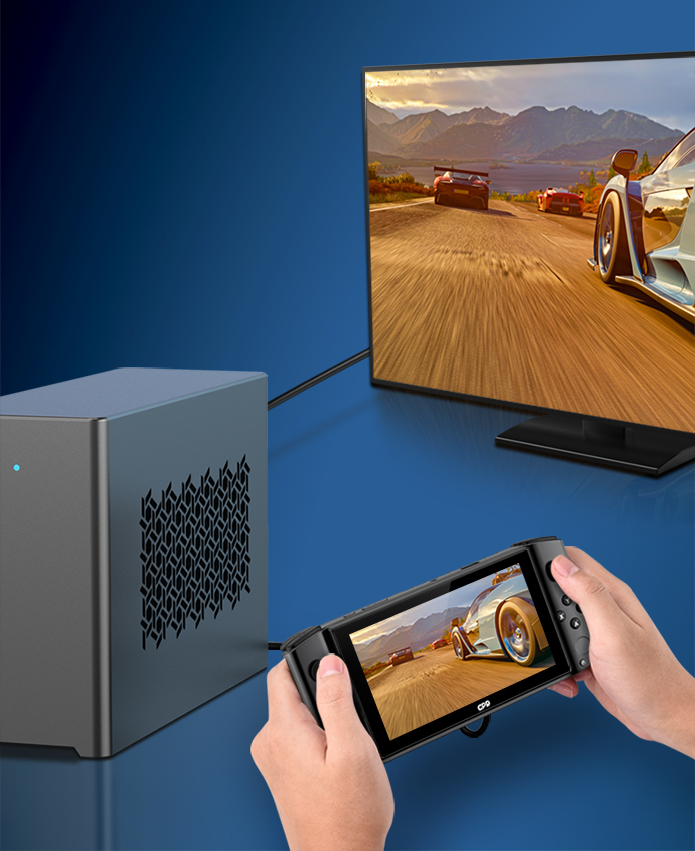
*Note: eGFX is a standard defined by Intel, which includes a complete set of external graphics solutions, such as power supply, motherboard, graphics card, interface, etc. The term eGPU only represents the graphics card. At present, retail platforms do not call eGFX uniformly. There are eGPU, graphics card dock, external graphics card box, external graphics card dock, etc., which actually refer to eGFX. When connecting to an external graphics dock, the frame rate depends on the performance of the external graphics card.
In addition to external eGFX devices, the Thunderbolt 4 interface of WIN 3 supports power adapters based on PD 2.0/3.0 protocol and 15V/20V voltage, which is very scalable. For instance:
1. Any PD2.0/30 protocol power adapter with charging voltage up to 15V/20V on the market can charge WIN 3.
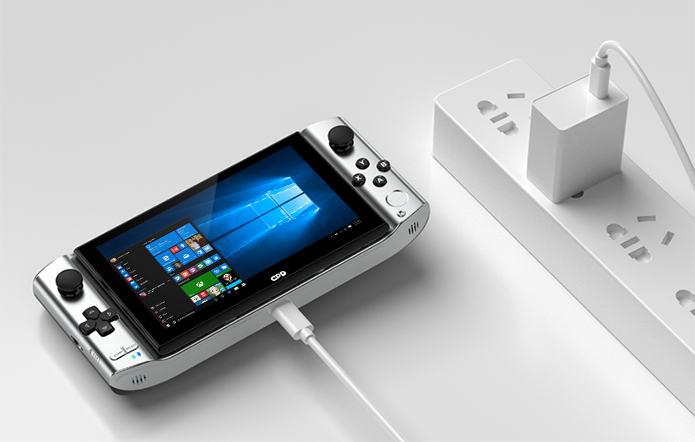
2. Through the Thunderbolt 4 interface, while outputting high-definition video signals to any monitor, the monitor can charge WIN 3 in reverse!
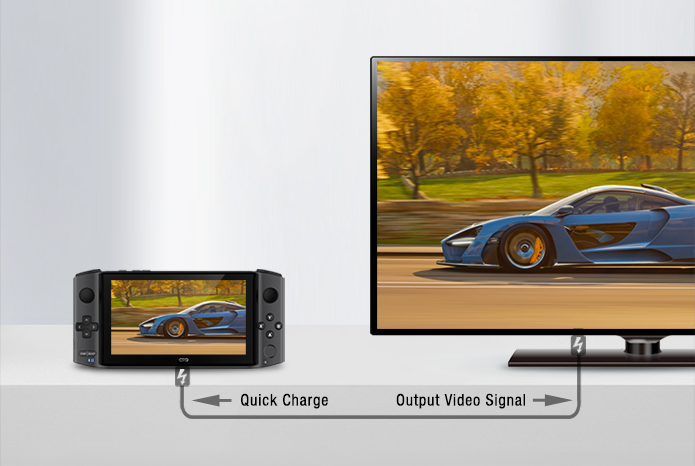
3. Through Thunderbolt 4 interface, WIN 3 supports the connection of 2 4K monitors or 1 8K monitor output.
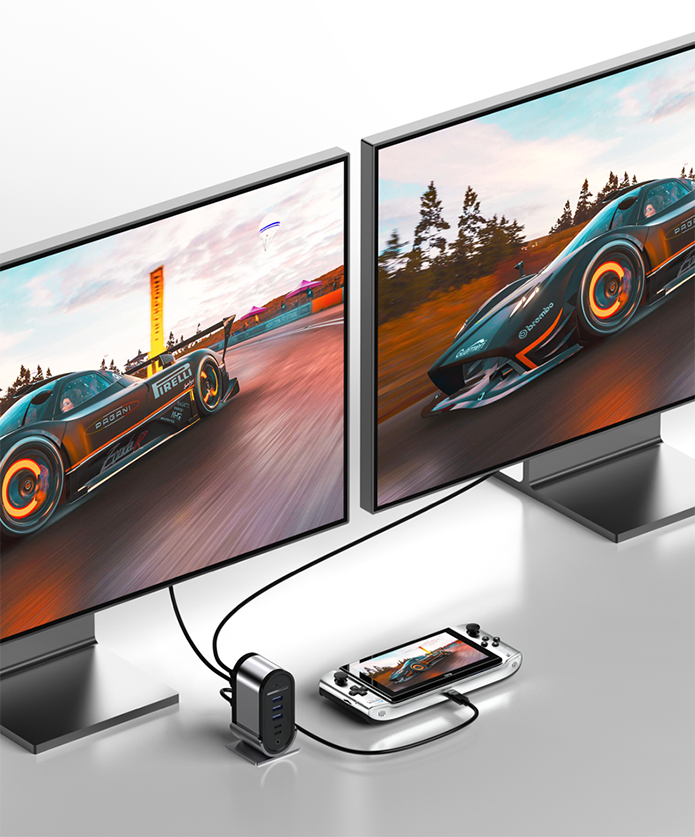
4. In the future, PCIe Gen 4 SSD external mobile hard disk or USB 4 flash disk can be connected to provide convenience for professional photographers to transfer large m2ts video files!
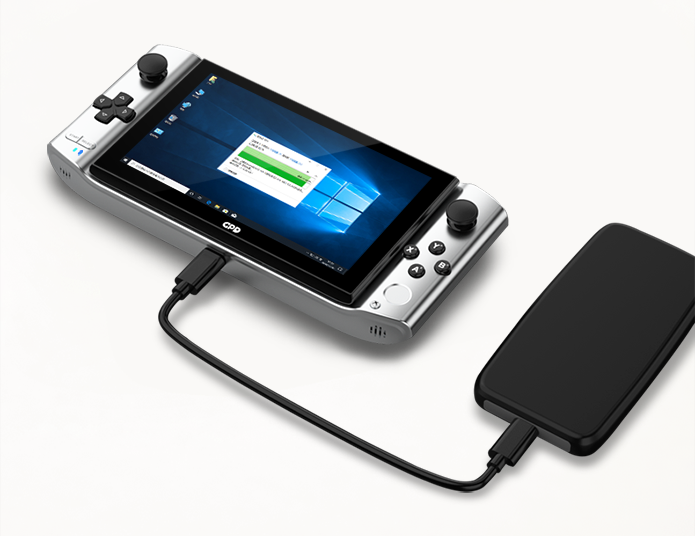

WIN 3 supports Intel’s latest Wi-Fi 6 (Gig+) technology that complies with the IEEE 802.11ax standard, 160MHz channel, and single stream bandwidth up to 2402Mbps (download speed of 300MB/s).
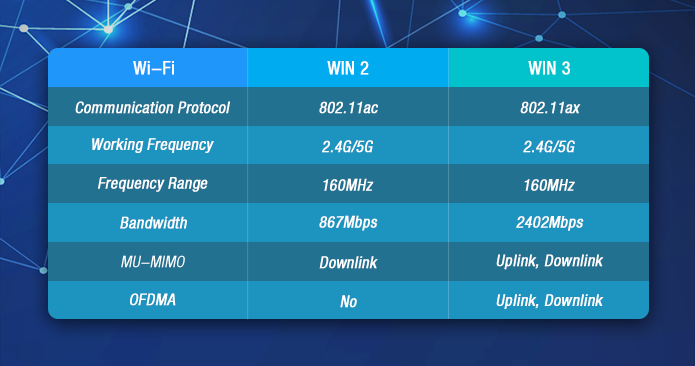
Unlike the SU-MIMO supported by Wi-Fi 5 (802.11ac Wave 1), Wi-Fi 6 improves MU-MIMO, greatly improving network throughput and parallel communication capabilities. When WIN 3 is connected to a wireless router based on MU-MIMO, with OFDMA technology, even if multiple wireless devices are connected to the router, its parallel communication capability can completely eliminate the high network delay caused by queued requests.
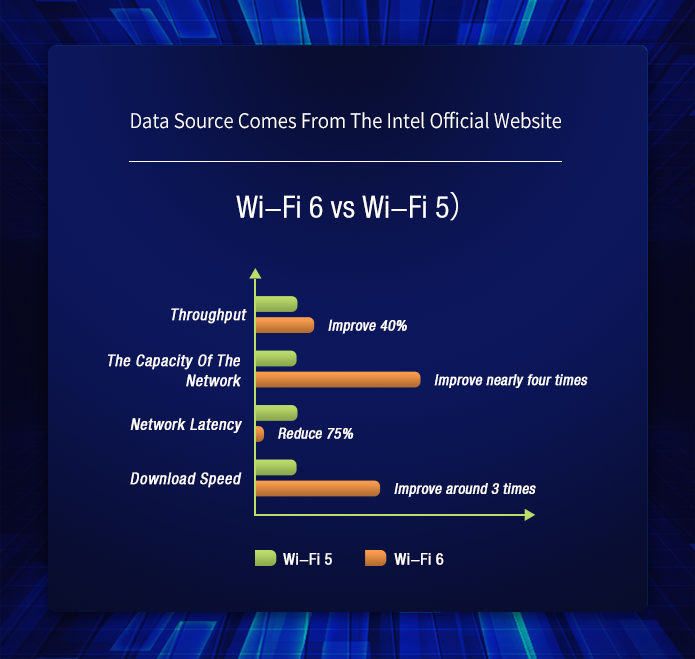
Compared with Wi-Fi 5, the theoretical transmission speed and throughput of Wi-Fi 6 are increased by 4 times, which is 2.4 times the current Gigabit wired network speed and 24 times the 100M wired network speed.
In the future, WIN 3 players can experience super smooth cloud games in any Wi-Fi 6-based network environment.

The Bluetooth 5.0 of WIN 3 can connect 7 Bluetooth devices at the same time, and the transmission speed is increased to 3MB/s. After turning on Wi-Fi, indoor positioning with an accuracy of less than 1 meter can be achieved. Meanwhile, Bluetooth 5.0 has an increased effective communication distance of 300 meters, which means that players can break through the 10-meter limit of the old Bluetooth specification and connect various Bluetooth devices over a wider range.
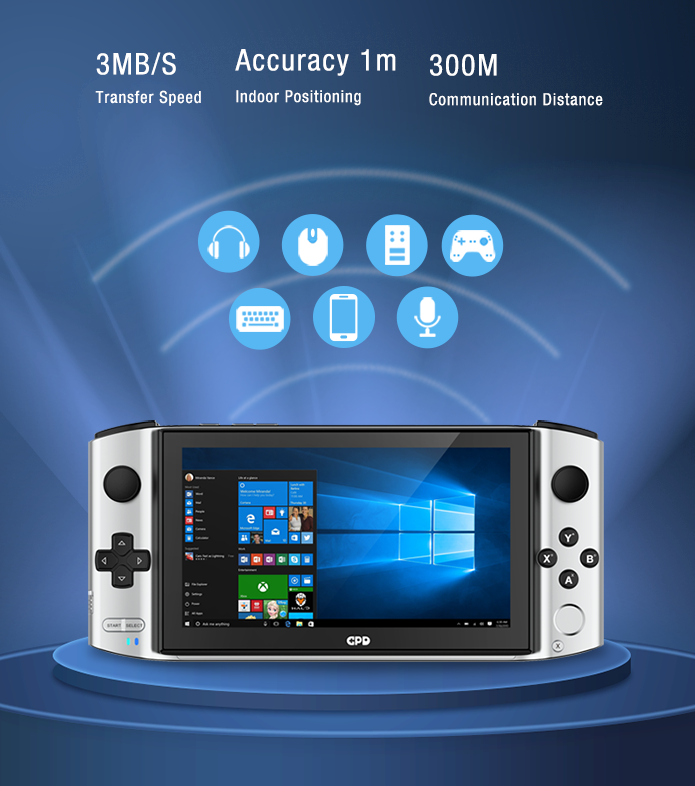
*Note: The connected device must also support Bluetooth 5.0 to achieve long-distance communication. It cannot work when connected with two identical devices at the same time, such as two headphones of the same specification. The communication distance of 300 meters is the theoretical value. The communication distances of most Bluetooth 5.0 devices may be reduced to 10 meters by the manufacturer due to high power consumption. Please confirm whether the connected device supports long-distance communication before purchasing.

WIN 3 provides 65W PD 2.0 protocol fast charging, which can be charged through the Thunderbolt 4 interface of the body or the Type C interface of the base. A full charge is about 1.5 hours, the battery life for heavy games is 2 to 3 hours, that for moderate use is 6 to 8 hours, and that for light use is about 11 hours.
The following table is the comparison between charging performances of WIN 3 and Microsoft Surface Pro 7:
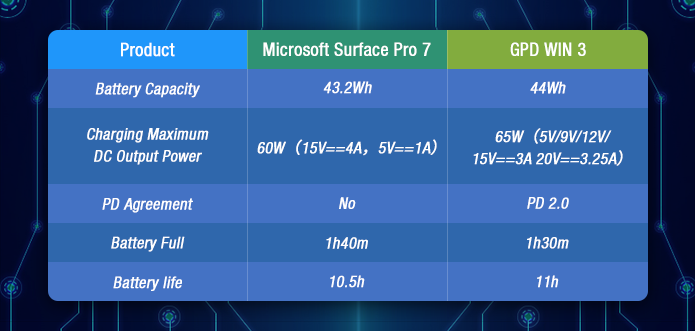
* Note on battery life testing:
The test involves draining a fully charged battery during normal use, i.e., both active use and standby. The active parts include:
(1) Web browsing test of accessing 8 mainstream websites through multiple open tabs
(2) Using Microsoft Word, PowerPoint, Excel, and Outlook for productivity testing
(3) Applications on the device running for a period of time in an idle state
All settings during the test are default values, except for the following settings: the screen brightness is set to 150 nits, and the automatic brightness adjustment is disabled; Wi-Fi stays connected. Battery life will vary significantly due to device settings, usage, and other factors.
In addition to charging WIN 3, the standard 65W fast charge also supports charging any mobile phone, tablet, and laptop with a USB Type-C interface, and is compatible with PD protocol.



We are a company specializing in handheld game and office devices in Shenzhen, China. GPD is our brand, and its full name is GamePad Digital, which comes from the founder’s idea of making a product for games. GPD is committed to providing users with well-customized products and services.

We are a company specializing in handheld game and office devices in Shenzhen, China. GPD is our brand, and its full name is GamePad Digital, which comes from the founder’s idea of making a product for games. GPD is committed to providing users with well-customized products and services.

First, we wish to thank the users who participated in the crowdfunding of our products again. It is your continuous support that makes our products better. We also thank all game players who participated in this large-scale crowdfunding. Without your trust and support, there would be no mass production and launch of this product.

1. Do the funds raised this time include tariffs incurred when the return reaches the destination country?
The raised funds include international express freight and remote area surcharges, but do not include tariffs incurred when entering the destination country. Generally, tariffs of 21% will be incurred when entering EU countries; tariffs of about 10% will be incurred when entering Japan; tariffs of over $800 will be incurred when entering the United States; tariffs in other countries may be higher.
2. What kind of after-sales service will users participating in crowdfunding receive?
Crowdfunding users enjoy the same warranty rights as users who purchase after the product is officially launched. If you are not satisfied with the product, you can return it within one week of receipt, but the cost of shipping the product to you will be deducted from the refund.
Please note that the shipment and packaging costs incurred by the return will be borne by you. Please ship via the local postal express. Other international logistics will incur tariffs ranging from 20% to 30% of the value of the goods when entering China. GPD will not bear this part of the cost.
3. What if the crowdfunding fails to reach the target amount?
If the crowdfunding fails to reach the target amount, we will issue a return, and we will seek other means of financing to ensure the smooth progress of R&D and mass production. We hope that players who love this handheld game console can continue to stay updated on the progress of the project.
4. What should you do if your question is not answered in time?
If your question is not answered in time, please refer to the following contact info:
About product technical issues during crowdfunding, please email to: Kendyz@gpd.hk
About the product delivery progress after the crowdfunding, please email to: Kendyz@gpd.hk
About quality problems or returns after receiving the product, please email to: Kendyz@gpd.hk
For inquiries about sales distribution or agency, please email to: Sales02@gpd.hk
When sending an email to us, please make sure to send it from the email address in your crowdfunding order, and we will arrange for relevant staff to reply to you.

Supporters of Indiegogo will be rewarded first.
Product specifications may change during the crowdfunding to ensure that the product is as perfect as possible. If there is a change in specifications, we will notify you as soon as possible in the “Update” section of the crowdfunding page.
The product will come with CE-RoHS, FCC, CCC, JATE, MIC, and other international certifications.
We will try our best to issue rewards at the agreed time. However, due to possible supply chain and quality control issues, the payment may be postponed. We appreciate your understanding!


